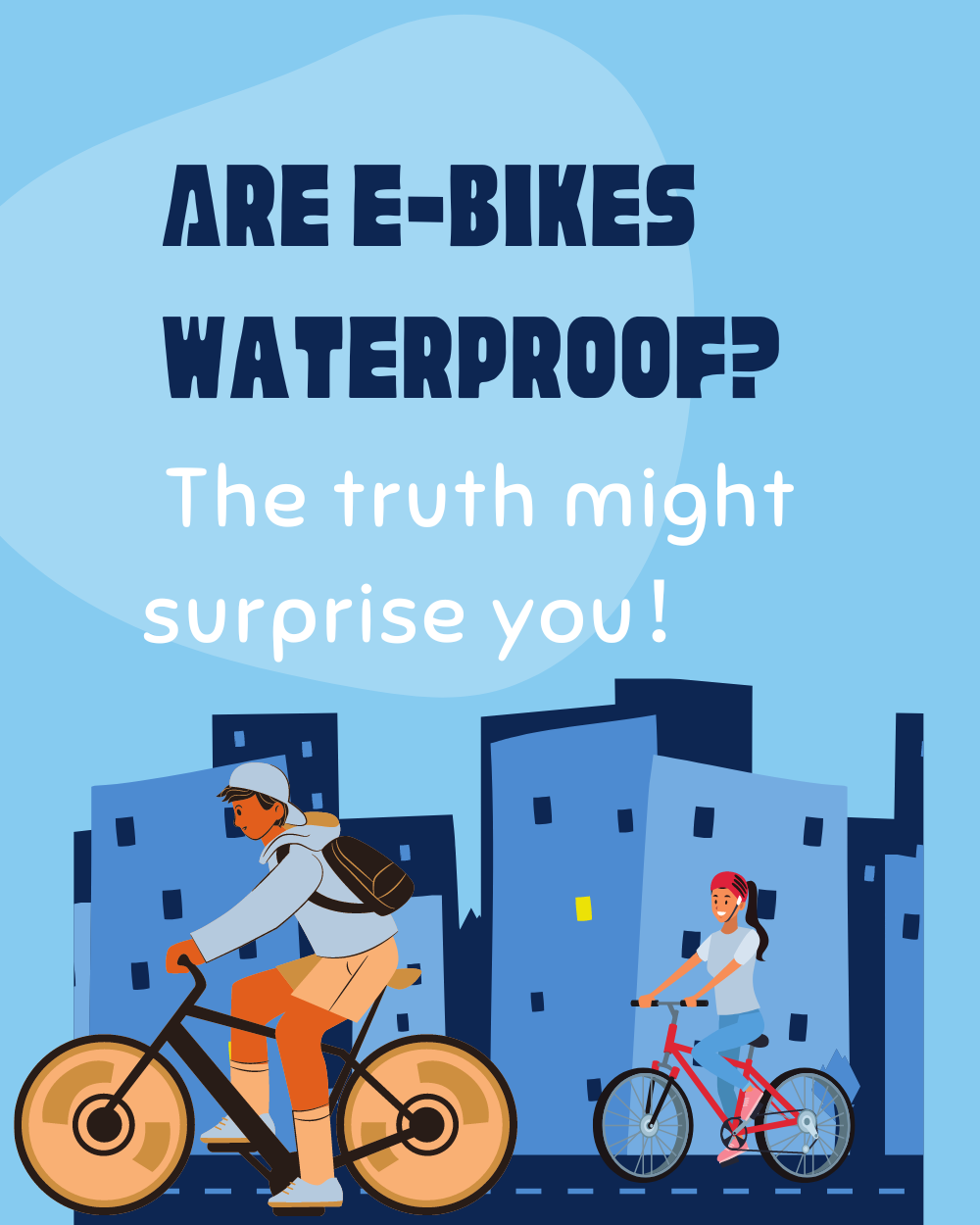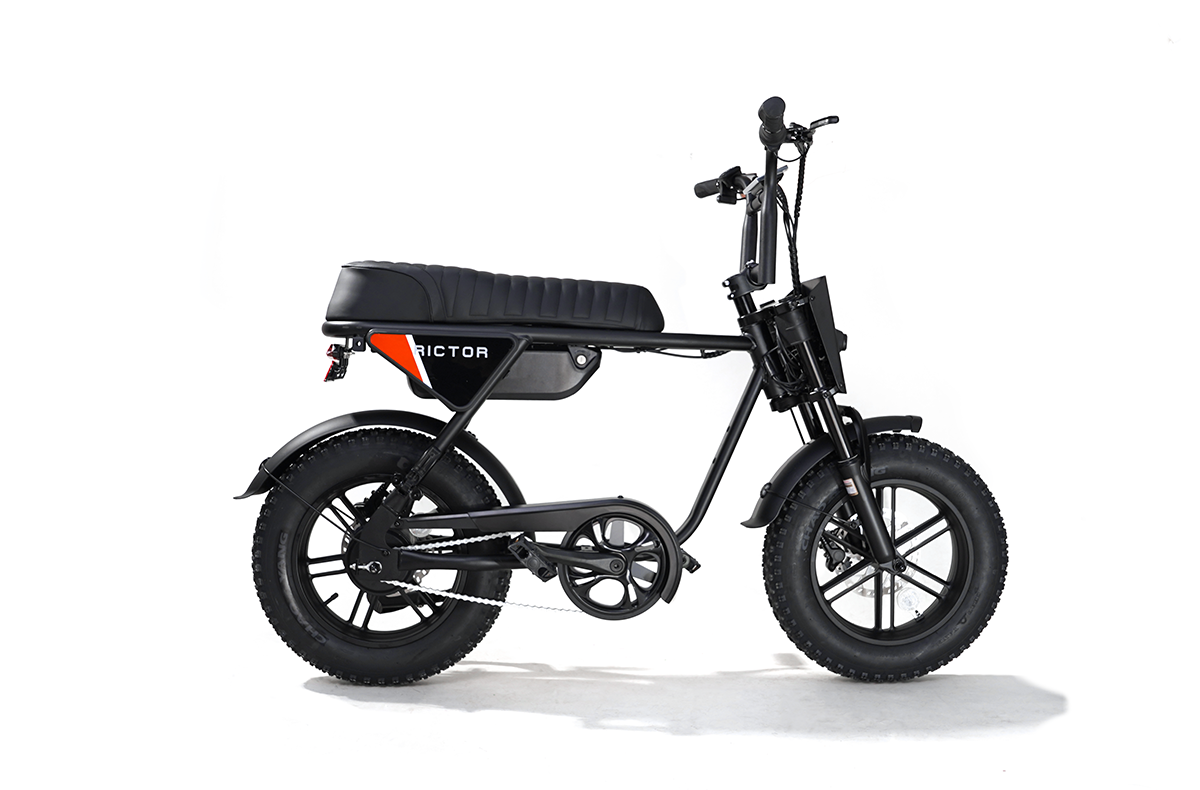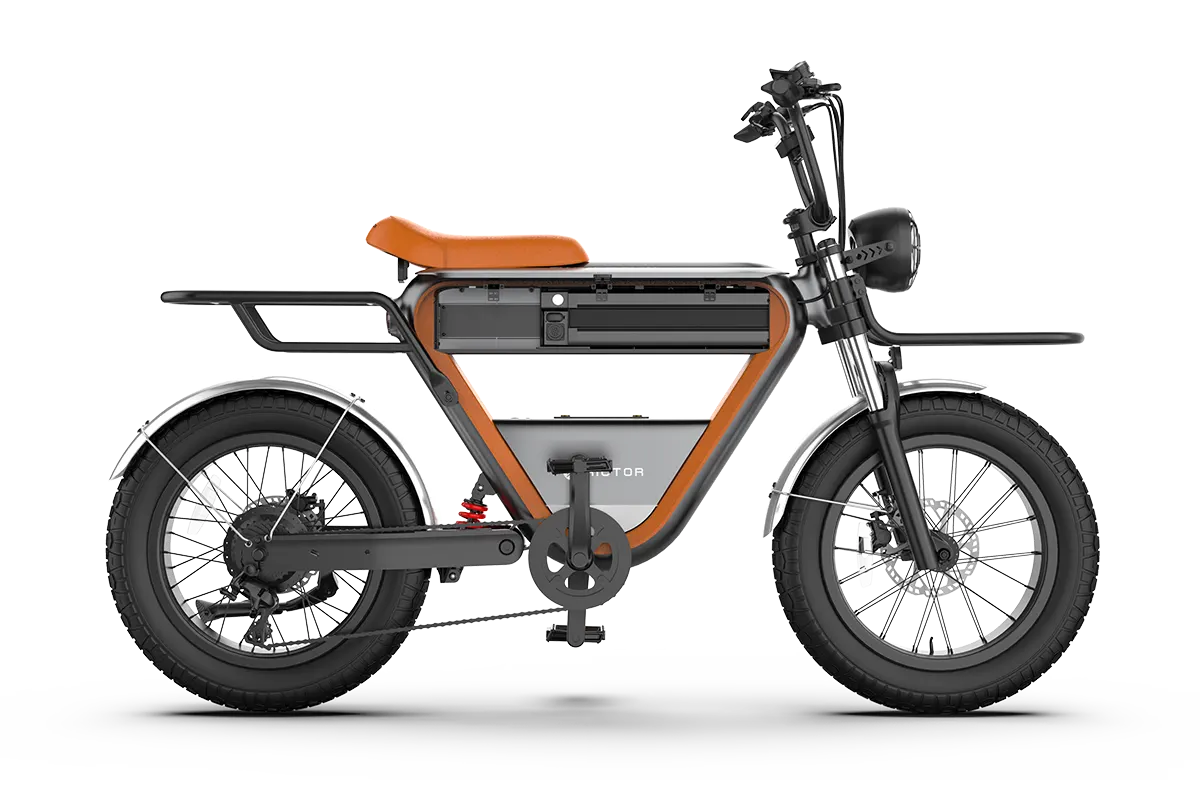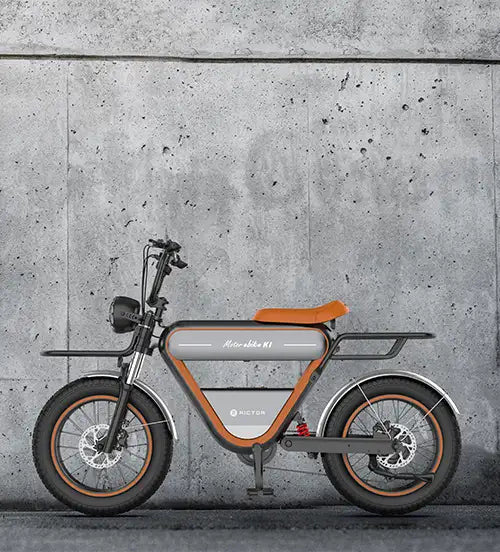
Are e-bikes waterproof? the truth might surprise you!we still have owesome recommendation
You don’t want to end up swimming with your electric bike on a rainy day, right? Having one that's "waterproof" seems essential, especially if you’re planning to ride through rain or puddles.
But here’s the catch—when manufacturers claim their e-bikes are waterproof, do they really mean it?
Can you trust that your bike is completely impervious to water?
The reality is, "waterproof" might not mean what you think. It’s often more about resisting water than being totally immune to it.
In this article, we’ll explain what waterproof and water-resistant mean for e-bikes, and help you understand how much water your bike can handle.
You'll also learn simple tips to protect your e-bike in wet conditions.
Waterproof vs. Water-Resistant
Before we jump into whether electric bikes are waterproof, let’s clear up a common mix-up: the difference between waterproof and water-resistant.
These terms get thrown around a lot, but they don’t mean the same thing.
When we say something is waterproof, we mean it can be fully dunked in water without getting damaged.
Your high-end dive watches or gear made for underwater adventures—those are waterproof. They can handle a swim in the pool or a dive in the ocean without missing a beat.
Water-resistant, however, is a bit different. It means the item can handle a bit of moisture, like a splash or some rain, but it’s not built to be submerged.
Think of it like wearing a rain jacket: it’ll keep you dry in a drizzle, but you wouldn’t want to go swimming in it.
Now, when it comes to electric bikes, most of them are water-resistant rather than fully waterproof.
This means they can take on a rainy ride or a splash of water here and there, but you’ll want to avoid any deep puddles or streams.
| First Digit (Solids Protection) | Description | Second Digit (Liquids Protection) | Description |
|---|---|---|---|
| 0 | No protection | 0 | No protection |
| 1 | Protected against objects > 50mm | 1 | Protection against vertical water drops |
| 2 | Protected against objects > 12.5mm | 2 | Protection against water drops when tilted up to 15° |
| 3 | Protected against objects > 2.5mm | 3 | Protection against water spray up to 60° angle |
| 4 | Protected against objects > 1mm | 4 | Protection against water splashes from any direction |
| 5 | Dust-protected (limited ingress permitted) | 5 | Protection against low-pressure water jets from any direction |
| 6 | Dust-tight (no ingress) | 6 | Protection against high-pressure water jets from any direction |
| 7 | Protection against immersion up to 1 meter for 30 minutes | ||
| 8 | Protection against prolonged immersion beyond 1 meter |
Common IP Ratings for E-Bikes
- IP54: This rating means your e-bike is protected against limited dust ingress and can handle water splashes from any directionThis is sufficient for most urban commuters who might encounter occasional light rain or wet conditions.
- IP55: With this rating, your e-bike gets a bit more rugged. It’s still dust-protected, meaning some dust might get in, but it won’t interfere with the bike’s operation. It’s also protected against low-pressure water jets from any direction. This means you can ride confidently in moderate rain or through puddles without worrying too much about water damage.
- IP65: This is where things get serious. An e-bike with an IP65 rating is dust-tight—no dust at all will enter the critical components—and it can handle low-pressure water jets from any direction. This is ideal for those who ride in more challenging conditions, like off-road trails or in regions with heavy rainfall.
None of these ratings suggest that you can fully submerge your bike in water without risking damage, especially when it comes to the electrical components like the battery and motor.
Therefore, while an IP65-rated e-bike can give you peace of mind in a downpour, it’s still wise to avoid riding through deep water or subjecting your bike to excessive moisture whenever possible.
SEE ALSO The RICTOR K1 is the BEST ALL AROUND EBike Under $2,500!
Waterproof Electric Bike Recommended
The Electric Bike K1 is your answer in the wet condition.
This bike comes with an IP65 waterproof rating, meaning it's ready to take on those wet and wild rides.
But that’s not all—the K1 goes above and beyond by offering IP7 protection for its key components like the battery and motor.
So, whether you're caught in a downpour or splashing through puddles, this bike has got you covered.
Why You’ll Love This E-Bike
-
Speed to Match Your Style:
-
Electric Mode: Zoom up to 20 mph effortlessly.
-
Pedal Assist Mode: Kick it up to 28 mph when you need that extra boost.
-
-
Range to Keep You Going:
-
Electric Mode: Cruise for up to 35 miles on a single charge.
-
Pedal Assist Mode: Go the distance with 70+ miles of range.
-
-
Power When You Need It:
-
750W Motor: Delivers serious power for smooth acceleration.
-
48V System: Ensures consistent performance, even on longer rides.
-
15Ah Battery: Keeps you charged up and ready to roll.
-
-
Torque That Takes You Places:
-
85Nm Peak Torque: Conquer hills and tackle tough terrains with ease.
-
Key Components and Their Water Resistance
Battery and Motor
The battery and motor are the most critical components of an electric bike, and their protection from water is paramount.
Most e-bike batteries are encased in a water-resistant housing, but the level of protection can vary based on the brand and model.
High-quality e-bikes often feature sealed battery compartments, designed to prevent water ingress even in adverse weather conditions.
Prolonged exposure to water, such as riding through heavy rain for extended periods, can still pose a risk.
It's advisable to regularly check the seals and ensure that the battery compartment remains intact and secure.
The motor, typically located in the hub or mid-drive, is also designed to withstand some exposure to water.
Hub motors are usually more protected than mid-drive motors due to their enclosed design.
Water can still find its way into the motor if it is fully submerged or exposed to water for long periods. Regular maintenance and inspections are key to ensuring the longevity of your e-bike's motor.
Notably, the Rictor K1 e-bike stands out with its IP7-rated protection on key components, offering superior resistance to water even in more challenging conditions.
Electrical Connections
E-bikes rely on a network of electrical connections to function, including wires, sensors, and displays.
These connections are often coated with a protective layer to prevent water ingress. They remain a potential weak point for water damage.
One way to enhance the water resistance of these connections is by using dielectric grease, which helps to seal and protect the electrical contacts from moisture.
Additionally, ensuring that all connectors are properly fitted and that there are no exposed wires can significantly reduce the risk of water damage.
The Rictor K1 further ensures durability by incorporating IP7-rated protection across these connections, reducing the likelihood of moisture-related issues.
Best Practices for Riding in Wet Conditions
Avoiding Deep Water
While your electric bike may be water-resistant, it is not advisable to ride through deep water.
Submerging the motor, battery, or other electrical components can cause irreparable damage.
If you encounter a flooded path, it’s better to find an alternative route rather than risking your e-bike’s integrity.
Regular Maintenance
Water can cause rust and corrosion over time, especially on exposed metal parts such as the chain, gears, and bolts.
To mitigate this, it's essential to perform regular maintenance on your e-bike, particularly after riding in wet conditions.
Steps to Maintain Your E-Bike After Riding in the Rain:
-
Wipe down the bike with a dry cloth to remove excess water.
-
Lubricate the chain and other moving parts to prevent rust.
-
Check the battery compartment and motor for any signs of water ingress.
- Inspect the electrical connections for any signs of moisture or corrosion.
Use of Fenders and Covers
Adding fenders to your e-bike can significantly reduce the amount of water and mud that splashes onto the bike, particularly on the electrical components.
Protective covers are also available for the battery and display, offering an additional layer of protection during rain.
When storing your e-bike, particularly in a damp environment, consider using a waterproof cover to shield it from moisture.
This simple step can go a long way in preserving the longevity of your e-bike.
What to Do If Your E-Bike Gets Wet
Despite your best efforts, there may be occasions when your e-bike gets excessively wet. In such cases, it's essential to act quickly to prevent damage.
-
Turn off the e-bike immediately and remove the battery. This prevents any electrical short circuits.
-
Dry the bike using a clean, absorbent cloth, paying special attention to the battery, motor, and electrical connections.
-
Allow the bike to air dry in a warm, dry environment for several hours, or even overnight, before turning it back on.
- Inspect for any water ingress in the battery and motor housing before reassembling and turning the bike on.
FAQs
How long does it take to fully charge the K1’s battery?
The K1’s 15Ah battery typically takes around 4-5 hours to fully charge using the standard 3A charger provided. However, charging time can vary depending on the remaining battery level and environmental conditions.
Is the K1 suitable for off-road use?
Yes, the K1 is well-suited for off-road use. Its 750W motor and 85Nm peak torque provide the power needed to handle rough terrains, while the robust waterproofing ensures durability in challenging environments.
Can the K1’s battery be removed for charging?
Yes, the K1’s battery is removable, allowing you to charge it separately from the bike. This feature is particularly useful if you need to charge the battery indoors or in a secure location.
💡 Explore More Here!
- Are Electric Bikes Allowed in National Forests? (In Some, Yes)
- Quick Gearshift Tips! Easy Guide for Beginners on 7 Speed Bikes
- 2024 Electric Bicycle Pricing, don’t overpay on your next ride [+ Good Recommendation]
- 9 Benefits to ride electric bike, ditch the stationary bike and ride free
- Is Riding an E-bike Cheating? Or Is It the Ultimate Hack?




